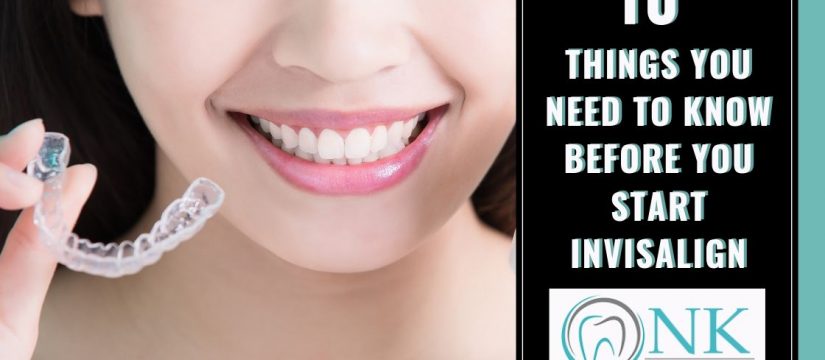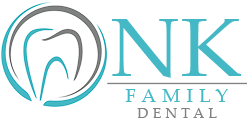
Invisalign has become one of the most popular treatment options for cosmetic dentistry, especially for teens and adults. The clear aligners are discreet and can offer a more comfortable experience than traditional braces. However, Invisalign requires just as much care and attention as traditional braces in order to achieve the same winning smile. Learn the 10 most important facts about Invisalign treatment so your treatment will be successful and permanent.
Benefits of Invisalign
There are many benefits to Invisalign compared to traditional braces. One of the greatest benefits is that there is no upper age limit for Invisalign, so both teens and adults can opt for it. Of course, the clear aligners make the process of teeth straightening much more subtle. There are also no food restrictions for Invisalign wearers, compared to the lengthy list of taboo foods for those with metal braces. Soreness from teeth shifting may additionally be reduced by opting for Invisalign over traditional braces. Finally, while this is not a guaranteed benefit, Invisalign can potentially help with whitening your teeth, as the whitening agents in toothpaste after brushing will be compressed to your teeth when wearing the clear aligners.
How to Prepare
It’s important to know your options and be fully prepared before starting Invisalign treatment. While Invisalign offers many benefits and is less obvious than braces, not everyone is a candidate. Traditional braces will be required for more complex teeth and straightening concerns. As with any dental treatment, it’s important and necessary to talk with your dentist to decide the best plan of action for your needs. Remember that Invisalign is not an easier option simply because of the clear aligners, so be prepared to put as much effort into taking care of your teeth as traditional braces.
Top 10 Things You Need to Know Before You Start Invisalign
Now that you are more aware of the benefits and preparation steps, let’s look at some of the most important things you need to know about Invisalign before you start:
- You’ll be wearing your aligners the majority of every day. Just because they are clear doesn’t mean you can leave them off for long periods of time. Invisalign works best to straighten your smile when the aligners are worn as long as possible—a minimum of 22 hours a day. Keeping them in as much as possible will help you get used to the feel over time, as well.
- You may notice a small difference in your speech. While it likely won’t be that noticeable to anyone except yourself, you should expect to experience a slight lisp as you adjust to the aligners. This is likely to improve after the first day or two of wearing a new Invisalign set. The best way to adjust is to simply practice and speak with them on as much as you can.
- There is no set length of treatment. Because every person’s teeth are unique, the length of time to straighten them varies even with Invisalign. Adults can expect a year of treatment, on average, but your orthodontist or dentist will be able to provide a more accurate length according to your own needs. The best way to get Invisalign off as quickly as possible, though, is to be vigilant in your routine care and wear them the minimum 22 hours a day.
- You’ll frequently be brushing and flossing. After every time you eat, you will need to brush and floss your teeth, no matter what. Food particles getting caught between your teeth and the aligners can lead to irritation, pain, and even cavities. The pH of your mouth will additionally change when wearing Invisalign, so it’s essential to keep your mouth as clean as possible. The few extra minutes a day will be worth it.
- The aligners require extra care. It’s not just your teeth that you will need to make sure are clean. Invisalign aligners must be cleaned daily by brushing them just like your teeth. Once in the morning and once in the evening is recommended, but brushing them when you brush your teeth after meals can help keep them clean throughout the day. Soaking the aligners once a day can also help keep them cleaner and whiter.
- You can’t eat with the aligners on. Thankfully, there are no restrictions on what you can eat when they are off. The downside to this is the frequent brushing and flossing, as mentioned in #4. Eating with the aligners on can make taking care of them very difficult, so it’s important to always take them out before eating. Drinking water regularly with Invisalign treatment will also help keep your mouth hydrated and clean.
- You may need attachments. Invisalign provides a clear, almost unnoticeable experience. However, the straightening needs of your teeth may require a little extra assistance to catch up to speed with the rest of your teeth. Attachments, known as Invisalign buttons or brackets, are tooth-colored and blend right in to your teeth. They will only be attached to individual teeth that require them. With these potential attachments are likely to be clear rubber bands to help the treatment process.
- You will need to wear a retainer afterward. Just like with traditional braces, you will still need to wear a retainer every night once your Invisalign treatment is completed. A nightly retainer will help maintain the success of your straightened smile for years to come. Slacking on this step will cause your teeth to slowly start shifting back into misalignment.
- Your teeth may need extra work before starting Invisalign. This may depend on the size of your teeth and how well they will fit in with your aligner trays. In some cases, larger teeth may need to be slightly filed down in order to fit evenly. This routine procedure is not painful, and not everyone may need it done.
- Invisalign costs are variable. There is no way to give a precise estimate on the cost of Invisalign compared to traditional braces. Every person’s mouth and needs are different, after all. For some people, Invisalign may cost less than traditional braces. For others, the costs may be about the same. Your dental insurance provider may cover Invisalign treatment, as well. Your orthodontist or dental office will be able to provide you a more accurate quote for both Invisalign and braces.
Smile Freely Again
If you’re looking to regain confidence in your smile, look no further than Dr. Khan at NK Family Dental, your top-rated Bucktown dentist in the heart of Chicago. NK Family Dental provides a full range of dental, orthodontic and periodontal services, including both Invisalign and traditional braces. Contact us today to schedule your consultation.
